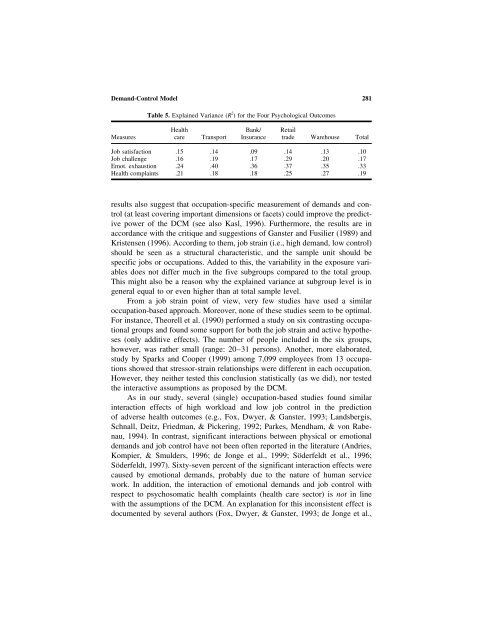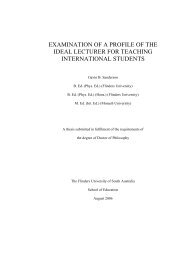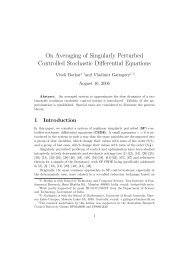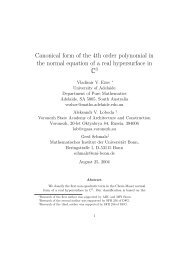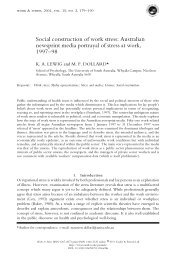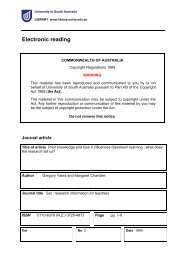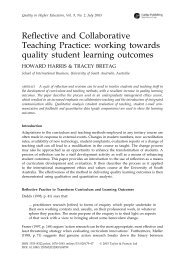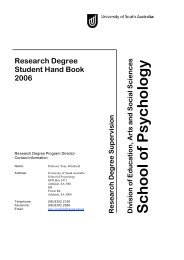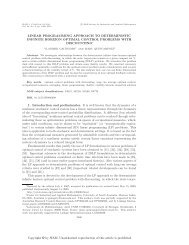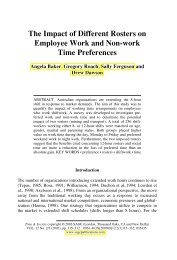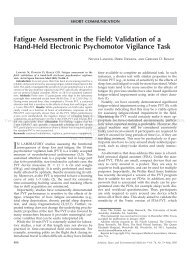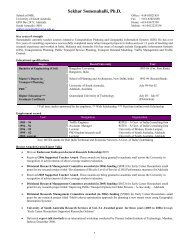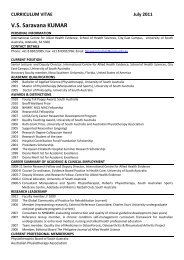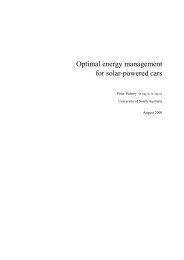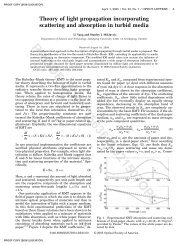The Demand-Control Model: Specific Demands ... - Study at UniSA
The Demand-Control Model: Specific Demands ... - Study at UniSA
The Demand-Control Model: Specific Demands ... - Study at UniSA
Create successful ePaper yourself
Turn your PDF publications into a flip-book with our unique Google optimized e-Paper software.
<strong>Demand</strong>-<strong>Control</strong> <strong>Model</strong>281Table 5. Explained Variance (R 2 ) for the Four Psychological OutcomesHealth Bank/ RetailMeasures care Transport Insurance trade Warehouse TotalJob s<strong>at</strong>isfaction .15 .14 .09 .14 .13 .10Job challenge .16 .19 .17 .29 .20 .17Emot. exhaustion .24 .40 .36 .37 .35 .33Health complaints .21 .18 .18 .25 .27 .19results also suggest th<strong>at</strong> occup<strong>at</strong>ion-specific measurement of demands and control(<strong>at</strong> least covering important dimensions or facets) could improve the predictivepower of the DCM (see also Kasl, 1996). Furthermore, the results are inaccordance with the critique and suggestions of Ganster and Fusilier (1989) andKristensen (1996). According to them, job strain (i.e., high demand, low control)should be seen as a structural characteristic, and the sample unit should bespecific jobs or occup<strong>at</strong>ions. Added to this, the variability in the exposure variablesdoes not differ much in the five subgroups compared to the total group.This might also be a reason why the explained variance <strong>at</strong> subgroup level is ingeneral equal to or even higher than <strong>at</strong> total sample level.From a job strain point of view, very few studies have used a similaroccup<strong>at</strong>ion-based approach. Moreover, none of these studies seem to be optimal.For instance, <strong>The</strong>orell et al. (1990) performed a study on six contrasting occup<strong>at</strong>ionalgroups and found some support for both the job strain and active hypotheses(only additive effects). <strong>The</strong> number of people included in the six groups,however, was r<strong>at</strong>her small (range: 20–31 persons). Another, more elabor<strong>at</strong>ed,study by Sparks and Cooper (1999) among 7,099 employees from 13 occup<strong>at</strong>ionsshowed th<strong>at</strong> stressor-strain rel<strong>at</strong>ionships were different in each occup<strong>at</strong>ion.However, they neither tested this conclusion st<strong>at</strong>istically (as we did), nor testedthe interactive assumptions as proposed by the DCM.As in our study, several (single) occup<strong>at</strong>ion-based studies found similarinteraction effects of high workload and low job control in the predictionof adverse health outcomes (e.g., Fox, Dwyer, & Ganster, 1993; Landsbergis,Schnall, Deitz, Friedman, & Pickering, 1992; Parkes, Mendham, & von Rabenau,1994). In contrast, significant interactions between physical or emotionaldemands and job control have not been often reported in the liter<strong>at</strong>ure (Andries,Kompier, & Smulders, 1996; de Jonge et al., 1999; Söderfeldt et al., 1996;Söderfeldt, 1997). Sixty-seven percent of the significant interaction effects werecaused by emotional demands, probably due to the n<strong>at</strong>ure of human servicework. In addition, the interaction of emotional demands and job control withrespect to psychosom<strong>at</strong>ic health complaints (health care sector) is not in linewith the assumptions of the DCM. An explan<strong>at</strong>ion for this inconsistent effect isdocumented by several authors (Fox, Dwyer, & Ganster, 1993; de Jonge et al.,


